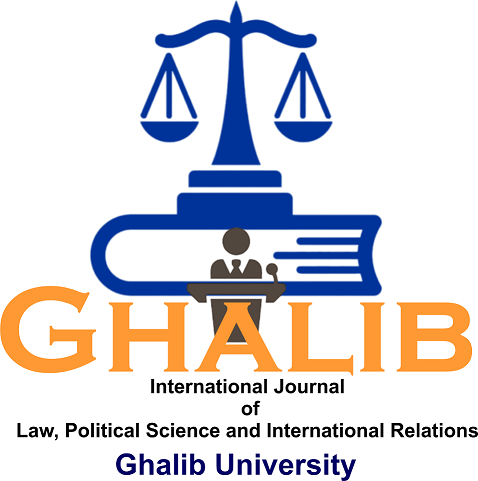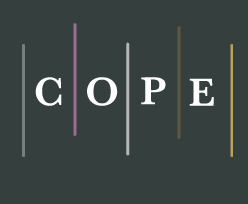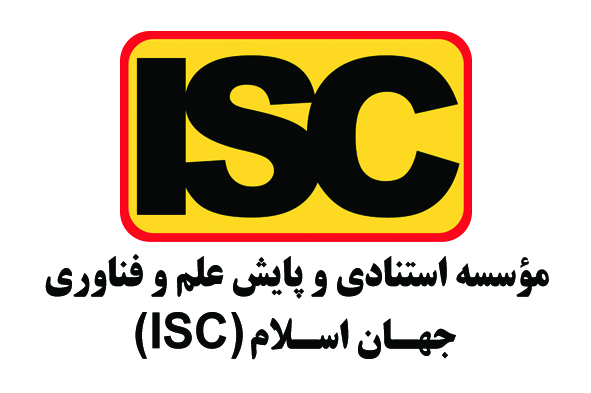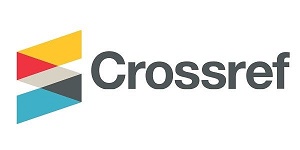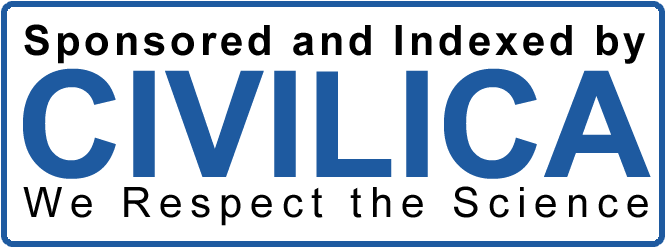پیامدهای روانی و اجتماعیِ پورنوگرافی
DOI:
https://doi.org/10.58342/ghalibqj.V.12.I.3.8واژهگانِ کلیدی:
پورنوگرافی، پیامد، روانی، اجتماعیچکیده
تغییرات جهان امروز و پیشرفت فنّاوری اطلاعات، دگرگونیهای گستردهیی در زندهگی انسان داشته است. عصر ارتباطات و فنّاوری با تمام امکانات خود و پیشرفتها، باعث ایجاد بحرانهایی نیز شده است؛ یکی از آنها، بحرانهای اخلاقی، رواجیافتن و دیدن تصاویر غیراخلاقی و مستهجن است، که باعث پیامدهای روانی و اجتماعی زیادی شده و زندهگی فردی و اجتماعی افراد را متأثر ساخته است. این پژوهش، با هدفِ بررسی پیامدهای روانی و اﺟﺘﻤﺎﻋﻲ ﭘﻮرﻧﻮﮔﺮاﻓﻲ در اِنترنت شکل یافته است؛ لذا این مقاله به این پرسش پاسخ میگوید که: پیامدهای روانی و اجتماعی پورنوگرافی چیست؟ این تحقیق براساس هدف، کاربردی، براساس سنجش دادهها، ﺗﻮﺻﻴﻔﻲ- اﺳﻨﺎدي است، که اطلاعات از ابزار کتابها، مقالات علمی معتبر و ﺳﺎیتهای اِنترنتی بهره گرفته ﺷﺪه است. نتایج تحقیق نشان میدهند که اعتیاد به پورنوگرافی و تماشای فیلمهای پورن، میتواند پیامدهای روانی و اجتماعی ناگواری را برای افراد در بر داشته باشد.
سرچشمهها/ منابع
اسلامی، مروارید. (1394)/ «بررسی شبکههای اجتماعــی و تأثیرات آنها بر ابعاد مختلف زندهگی». ایران: نخســتینکنگــرهٔ ملّی فضای مجازی، بی نا. <https://civilica.com/doc/268377/>.
2. پورخاتون، اعظم. (1391). «آسیبشناسی روانی - اجتماعی پورنوگرافی در اینترنت». نخستین کنگرهٔ ملّی فضای مجازی و آسیبهای اجتماعی نوپدید. تهران: وزارت تعاون، کار و رفاه اجتماعی. <https://civilica.com/doc/268370>.
خانجانی، مهدی؛ قنبری، فرشته؛ نعیمی، ابراهیم. (1398). «بررسی ارتباط کارکرد خانواده، سبک دلبستهگی و سبکهای تربیتی والدین با اعتیاد به اینترنت در نوجوانان». ایران: فصلنامهٔ فرهنگ مشاوره و روان درمانی. 10(37). 121-142.
4. ربیعی، علی و رضائیان. (1391). «آسیبشناسی اینترنت و بحران اخلاقی در جوامع معاصر». ایران: فصلنامۀ اخلاق در علوم و فناوری. 7(4). صص70-63 <https://ethicsjournal.ir/browse>.
5. لاسر، مارک. (1382). «هرزهنگاری در اینترنت». ایران: ماهنامهٔ سیاحت غرب. ش9. صص24-34. <https://www.noormags.ir/view/fa/articlepage/347813>.
6. مسعودی، حمید؛ بهروان، حسن. (1396). «تبیین جامعهشناختی عوامل مرتبط با عضویت، بازدید و ماندهگاری کاربران در گروههای اینترنتی غیر اخلاقی». ایران: نشریۀ رسانه و فرهنگ. سال هفتم: صص 123-146. <https://mediastudy.ihcs.ac.ir/article_2705.html>.
7. ملک احمدی، حکیمه؛ قاسمی، وحید. (1392). «زنان و آسیبشناسی استفاده از محصولات هرزهنگاری». ایران: فصلنامۀ علمی- تروجی اخلاق. سال سوم. شمارهٔ 11. 209- 228. <https://ensani.ir/fa/article/411714>.
8. میرحسینی، مریم. (1386). «کجرویﻫﺎي اﻳﻨﺘﺮﻧﺘﻲ و ﻟﺰوم ﻧﻈﺎرت و ﻣﺤﺪودﻛﺮدن دسترسی ﺑﻪ اﻃﻼﻋﺎت». ایران: مجلهٔ جهانی رسانه – نسخهٔ فارسی. 3(1). صص1-10. https://gmj.ut.ac.ir/article_66551.html>>.
9. نژادبهرام، زهرا؛ کمالی چیرانی، فاطمه. (1389). «بررسی ابعاد فرهنگی-اجتماعی کنترل والدین بر استفادهٔ فرزندان از اینترنت (تحلیل کنترل والدین بر استفاده فرزندان از اینترنت)». ایران: مجلهٔ برگ فرهنگ. جدید(21)، 135-148. https://sid.ir/paper/94152/fa>.
Bandura, A (2009). "Social cognitive theory or mass communication". In J. Bryant & M. B. Oliver (Eds.), Media effects: Advances in theory and research (pp. 94-124). New York: Routledge .<https://www.researchgate.net/publication/264466553>.
Bazerman, R. (2006). "Internet pornography, children in society: myth, truth and control". <https://psycnet.apa.org/record/2014-22822-010.
Michell KJ, Wolak J, Finkellon D. Trends in Youth Reports of Sexual Solicitations, Harassment and Unwanted Exposure to Pornography on the Internet. Journal of Adolescent Health 2007; 40(2): 116-126.
Yonghui, F&* Yutong, M, Q, Z(2019). The Relationship Between Adolescents’ Stress and Internet Addiction: A Mediated-Moderation Model.< https://doi.org/10.3389%2Ffpsyg.2019.02248>
References
Islamic, pearl. (2014)/ "Investigation of social networks and their effects on different dimensions of life". Iran: First National Congress of Virtual Space, Bina. <https://civilica.com/doc/268377>.
Bandura, A (2009). "Social cognitive theory or mass communication". In J. Bryant & M. B. Oliver (Eds.), Media effects: Advances in theory and research (pp. 94-124). New York: Routledge .<https://www.researchgate.net/publication/264466553>.
Bazerman, R. (2006). "Internet pornography, children in society: myth, truth and control". <https://psycnet.apa.org/record/2014-22822-010.
Michell KJ, Wolak J, Finkellon D. Trends in Youth Reports of Sexual Solicitations, Harassment and Unwanted Exposure to Pornography on the Internet. Journal of Adolescent Health 2007; 40(2): 116-126.
Yonghui, F&* Yutong, M, Q, Z(2019). The Relationship Between Adolescents’ Stress and Internet Addiction: A Mediated-Moderation Model.< https://doi.org/10.3389%2Ffpsyg.2019.02248>.
Pourkhaton, Azam. (2011). "Psycho-social pathology of Internet pornography". The first national congress of virtual space and emerging social harms. Tehran: Ministry of Cooperation, Labor and Social Welfare. <https://civilica.com/doc/268370>.
Khanjani, Mehdi; Qanbari, angel; Naimi, Ibrahim. (2018). "Investigating the relationship between family functioning, attachment style and parenting styles with Internet addiction in teenagers". Iran: Quarterly Journal of Counseling and Psychotherapy Culture. 10(37). 121-142.
Rabiei, Ali and Rezaian. (2011). "Internet Pathology and Moral Crisis in Contemporary Societies". Iran: Journal of ethics in science and technology. 7(4). pp. 70-63 <https://ethicsjournal.ir/browse>.
Lasser, Mark. (1382). "Internet Pornography". Iran: Western tourism magazine. Sh9. pp. 24-34. <https://www.noormags.ir/view/fa/articlepage/347813>.
Masoudi, Hamid; Behrwan, Hassan. (2016). "Sociological explanation of the factors related to the membership, visits and retention of users in unethical internet groups". Iran: Media and Culture Journal. The seventh year: pp. 123-146. <https://mediastudy.ihcs.ac.ir/article_2705.html>.
Malek Ahmadi, Hakimeh; Ghasemi, Vahid. (2012). "Women and the pathology of using pornographic products". Iran: Scientific and Promotional Quarterly of Ethics. third year. No. 11. 209-228. <https://ensani.ir/fa/article/411714>.
Mirhosseini, Maryam. (1386). "Internet deviations and the need to monitor and limit access to information". Iran: World Media Magazine - Persian version. 3(1). pp. 1-10. <https://gmj.ut.ac.ir/article_66551.html>.
Nejadbahram, Zahra; Kamali Chirani, Fatemeh. (1389). "Investigation of socio-cultural dimensions of parental control over children's use of the Internet (analysis of parental control over children's use of the Internet)". Iran: Barg Farhang magazine. New(21), 135-148. https://sid.ir/paper/94152/fa>.
چاپ شده
ارجاع به مقاله
شماره
نوع مقاله
مجوز
حق نشر 2023 فصلنامۀ علمی - پژوهشی غالب

این پروژه تحت مجوز بین المللی Creative Commons Attribution 4.0 می باشد.
